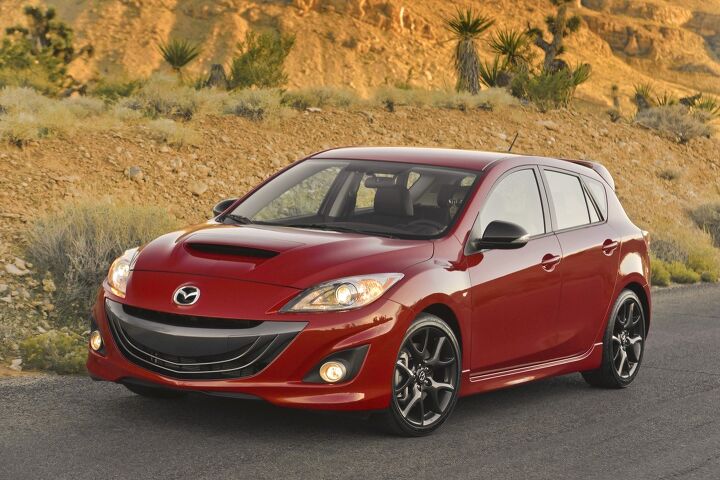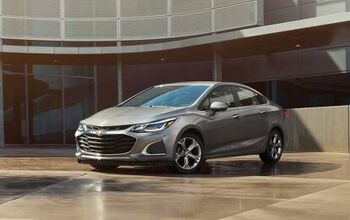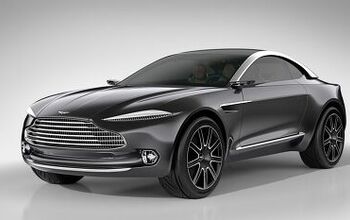Don't Expect a Return of Mazdaspeed

These days it seems as though every automaker, no matter how small, has a performance division on hand to offer up the occasional heart-pounding model variant to be coveted by enthusiasts. However, it only seems that way. Many brands have to go without.
Despite once branding itself as the everyday performance brand, Mazda hasn’t delivered a new Mazdaspeed vehicle since 2010. This left us wondering if the brand’s performance division would ever return. We even asked the company to weigh in on the situation back in 2017, with Mazda suggesting that all of its models are performance oriented (before saying it couldn’t comment on future products or any associated speculation). Subsequent inquiries were met with nearly interchangeable explanations.
Similarly dissatisfied, the folks at Road & Track adjusted their line of questioning in the hopes of prying more information out of Mazda. Rather than asking what’s happening with Mazdaspeed, they asked what it would take to see it produce another automobile. Unfortunately, the answers aren’t particularly encouraging.
“There are certainly a lot of us that still want to do something like that,” explained Dave Coleman, Development Vehicle Engineer at Mazda’s R&D center. “But the more we get the regular cars to where we want them, the less gap there is to what we would want to do with a Mazdaspeed car.”
One of the issues involves Mazda’s role as a relatively small automaker. While it moves a lot of metal as a singular brand (around 1.5 million vehicles annually), it doesn’t have the deep pockets of Volkswagen Group or General Motors. Since dissolving its partnership with Ford in 2015, Mazda has struck out on its own, being very careful with its money. It doesn’t want a performance project to go off half cocked due to financial constraints and it doesn’t seem convinced that any of the models currently on offer would be suitable for the Mazdaspeed touch.
“To do a [Mazdaspeed] car, you really have to do it right. And we can’t develop a new engine for that, we can’t do all the stuff with the core hardware at our scale, and with the ambitious stuff we’re trying to do with our small team. If we had an engine on the shelf that would fit that properly, then we could talk,” Coleman continued. “So far, nothing’s quite speaking the right language to be able to put something like that together and have it be as good as it needs to be … So we’ll just continue to focus on trying to bring everything up to where you don’t feel the need for [a Mazdaspeed version].”
While the engineer confessed that Mazda would green light all kinds of projects if money were no object (what automaker wouldn’t), he was also under the impression that times have changed. Mazda is a different kind of company now, with an emphasis on building itself into an upscale brand. While fun is still part of the equation, it’s not the entire focus anymore. Like the customers it seeks, Mazda has grown up.
When asked if the market has changed since the last Mazdaspeed 3 rolled off the line, Coleman said he believes so. “There was a groundswell of young enthusiasts in my generation,” the 47-year-old engineer said. “That is much smaller in new generations. And so for the large part, it’s my generation that’s looking for those cars. And we’re a little older. Also, Mazda as a brand is becoming more mature. Trying to be a little bit more premium, a bit more polished.”
“Even the Mazdaspeed 3, in its last iteration, came out as raw as it did due to the constraints,” he continued. “We only had so many things we could do with it. And we were down to the point where we had to compromise as far as, we can have this much torque steer, or we can have less torque.”
Ultimately, the manufacturer decided to go more hardcore with the Mazdaspeed 3. While this author can attest to the 2010 model year playing host to some of the most extreme torque steer ever encountered, it always felt like a fair trade in exchange for its lightning-fast reflexes and upgraded powertrain. Maybe it wasn’t something you wanted to live with, but it was something you could cope with while having barrels of fun. Coleman doesn’t agree.
“What you think you want is rawness,” he told Road & Track. “What you really want is responsiveness and directness. We’re used to paying a price for those things, and so we’re willing to pay that price because we want this direct response. If we can get those things without paying that price, nobody’s going to complain. We used to make excuses about how noisy our cars were because that’s what it took to make it as light, direct and responsive as we could. As we figured out how to make them quieter, nobody’s complaining that the car’s too quiet, that they don’t have that connection to the road surface anymore. Because we haven’t made compromises. We haven’t made the car dull and boring to drive as we made it quiet. ‘I had this car that was really fun and it was really painful.’ That doesn’t mean you want a painful car. You want the fun part.”
Speaking broadly, he might be correct. But that doesn’t mean there isn’t a subset of shoppers who don’t mind a roughing it a little to have a good time. Still, those might not be the kind of customers the company is interested in anymore. When was the last time anyone saw a new Zoom-Zoom ad?
[Image: Mazda]

A staunch consumer advocate tracking industry trends and regulation. Before joining TTAC, Matt spent a decade working for marketing and research firms based in NYC. Clients included several of the world’s largest automakers, global tire brands, and aftermarket part suppliers. Dissatisfied with the corporate world and resentful of having to wear suits everyday, he pivoted to writing about cars. Since then, that man has become an ardent supporter of the right-to-repair movement, been interviewed on the auto industry by national radio broadcasts, driven more rental cars than anyone ever should, participated in amateur rallying events, and received the requisite minimum training as sanctioned by the SCCA. Handy with a wrench, Matt grew up surrounded by Detroit auto workers and managed to get a pizza delivery job before he was legally eligible. He later found himself driving box trucks through Manhattan, guaranteeing future sympathy for actual truckers. He continues to conduct research pertaining to the automotive sector as an independent contractor and has since moved back to his native Michigan, closer to where the cars are born. A contrarian, Matt claims to prefer understeer — stating that front and all-wheel drive vehicles cater best to his driving style.
More by Matt Posky
Latest Car Reviews
Read moreLatest Product Reviews
Read moreRecent Comments
- Probert They already have hybrids, but these won't ever be them as they are built on the modular E-GMP skateboard.
- Justin You guys still looking for that sportbak? I just saw one on the Facebook marketplace in Arizona
- 28-Cars-Later I cannot remember what happens now, but there are whiteblocks in this period which develop a "tick" like sound which indicates they are toast (maybe head gasket?). Ten or so years ago I looked at an '03 or '04 S60 (I forget why) and I brought my Volvo indy along to tell me if it was worth my time - it ticked and that's when I learned this. This XC90 is probably worth about $300 as it sits, not kidding, and it will cost you conservatively $2500 for an engine swap (all the ones I see on car-part.com have north of 130K miles starting at $1,100 and that's not including freight to a shop, shop labor, other internals to do such as timing belt while engine out etc).
- 28-Cars-Later Ford reported it lost $132,000 for each of its 10,000 electric vehicles sold in the first quarter of 2024, according to CNN. The sales were down 20 percent from the first quarter of 2023 and would “drag down earnings for the company overall.”The losses include “hundreds of millions being spent on research and development of the next generation of EVs for Ford. Those investments are years away from paying off.” [if they ever are recouped] Ford is the only major carmaker breaking out EV numbers by themselves. But other marques likely suffer similar losses. https://www.zerohedge.com/political/fords-120000-loss-vehicle-shows-california-ev-goals-are-impossible Given these facts, how did Tesla ever produce anything in volume let alone profit?
- AZFelix Let's forego all of this dilly-dallying with autonomous cars and cut right to the chase and the only real solution.


































Comments
Join the conversation
The optimist in me hopes Mazda is observing how the z4 , Supra experiment goes down and will re-enter the fray, with an RX9 joint venture with someone.Ironically the F&F crowd is now in their late 30s now, with presumably more income. One historical note, the Cobalt SS had a torsion bar suspension, and it held the Lightning Lap record for a long while for it's class.
My only experience with Mazda was a 2006 Mazdaspeed 6. The AWD was genius in that it helped that 2.3 turbo hookup the power without torque steer. An absolute rocket. Powerband was short at 1500-5000. She dug down low. Would love to have that car today with superb winter tires.